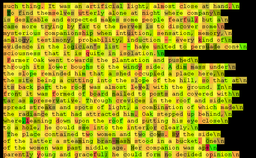Context Modelling (original) (raw)
ctxmodel.net
 Context Modeling is a divide-and-conquer method based on separation of data into subsequences by context, so that each subsequence can be approximated with a simple model (usually memoryless) while still providing a good overall precision. Most widely used CM subclass is PPM, which concentrates on a single context model due to performance considerations and switches to other contexts only if the main model fails. This allows PPM compressors to keep competitive speed at the cost of some prediction imprecision showing as redundancy. Another known subclass is Context Mixing, which linearly combines the predictions of several submodels. More complex schemes with secondary models using the primary predictions as context seem to remain anonymous. Then, there's yet another approach which also approximates complex data with simple model but by a static data transformation (LZ, Block Sorting, Symbol Ranking). Strange as it may seem, CM too is only a speed/redundancy tradeoff stage, as an ultimate modelling method is to find a function which generates given data. There're even some practical applications for this in the cases with known source model, then parameters can be determined by maximum likelihood.
Context Modeling is a divide-and-conquer method based on separation of data into subsequences by context, so that each subsequence can be approximated with a simple model (usually memoryless) while still providing a good overall precision. Most widely used CM subclass is PPM, which concentrates on a single context model due to performance considerations and switches to other contexts only if the main model fails. This allows PPM compressors to keep competitive speed at the cost of some prediction imprecision showing as redundancy. Another known subclass is Context Mixing, which linearly combines the predictions of several submodels. More complex schemes with secondary models using the primary predictions as context seem to remain anonymous. Then, there's yet another approach which also approximates complex data with simple model but by a static data transformation (LZ, Block Sorting, Symbol Ranking). Strange as it may seem, CM too is only a speed/redundancy tradeoff stage, as an ultimate modelling method is to find a function which generates given data. There're even some practical applications for this in the cases with known source model, then parameters can be determined by maximum likelihood.
Index
- Downloads
A generic open source BWT compressor (v1)
A CM postcoder used in BWTmix (v9)
Mix - bitwise order6 linear CM experiments
ST2rc - order Schindler transform demo
PPMd rewrite (v8)
ASH CM compressor (v07)
fpaq0pv4B fast o0 coder - Links
Old stuff - Gallery
- Guestbook
- Chat - #compression on irc.irchighway.org
- Forum